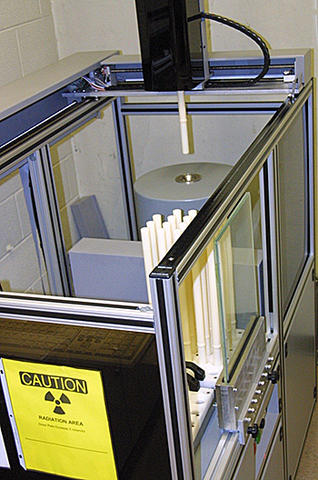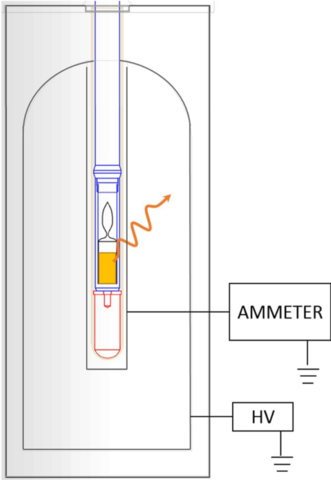Calibrations: Ionization Chambers as Secondary Standards for Activity of Radionuclides
Summary
Precise calibration of short-lived radioactive material is essential for nuclear medicine and power plant applications. To deliver such calibrations on-demand, scientists in the NIST Radioactivity Group have developed secondary-standard ionization chambers that can rapidly and reliably calibrate gamma-ray emitting radionuclides commonly used in clinics and industry. These instruments are calibrated at NIST for 70+ of the most important radionuclides based on NIST primary standardization methods.
Description

NIST automated ionization chamber in action. Custom sample-holders and positioning system ensure high degree of reproducibility, lead and lead-glass shielding for safety and effectiveness, picoammeter below shielding.
NIST maintains multiple ionization chambers to support heavily subscribed user demand for measurement assurance programs and calibrations and for ongoing research and development. The ionization chamber “A” maintains historic calibration factors for more than 70 radionuclides making it valuable both for delivering measurement services and for validating consistency of NIST standards over time. Meanwhile, ionization chamber “B”, also known as AutoIC, is a newer system with a robotic sample changer that can measure 100 samples in a programmable queue. The AutoIC is especially valuable for repeat measurements on batches of samples, reducing radiation exposure to personnel, and enabling advanced experimental design for half-life measurements and other studies.
NIST has developed radiation transport and interaction models of our ionization chambers to predict the response of the instruments to radionuclides based on their nuclear and atomic properties. These models are valuable for correcting response for radioactive impurities for which there are no standards, and for studying effects such as density and geometry on the response and understanding the physics processes, such as bremsstrahlung and pair production, that affect measurements.

In collaboration with NIST electrical metrology colleagues, we are developing a method to link ionization chamber radioactivity calibrations to SI-traceable currents, leading to reduced dependence on long-lived radioactive reference sources and improved measurements.
NIST also maintains a suite of off-the-shelf ionization chambers that are widely relied upon by radiopharmacies and clinics. We make unique contributions to the field by combining novel radiochemical source preparation methods with NIST primary standardization capabilities to study the best ways to translate accurate measurements into the field while avoiding biases.

